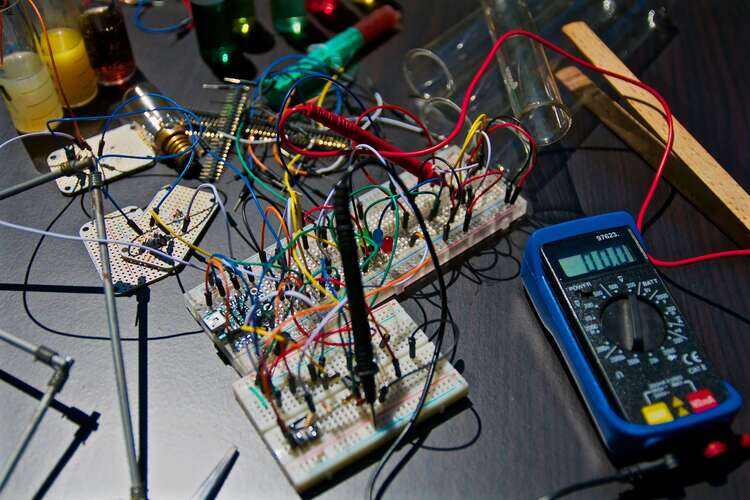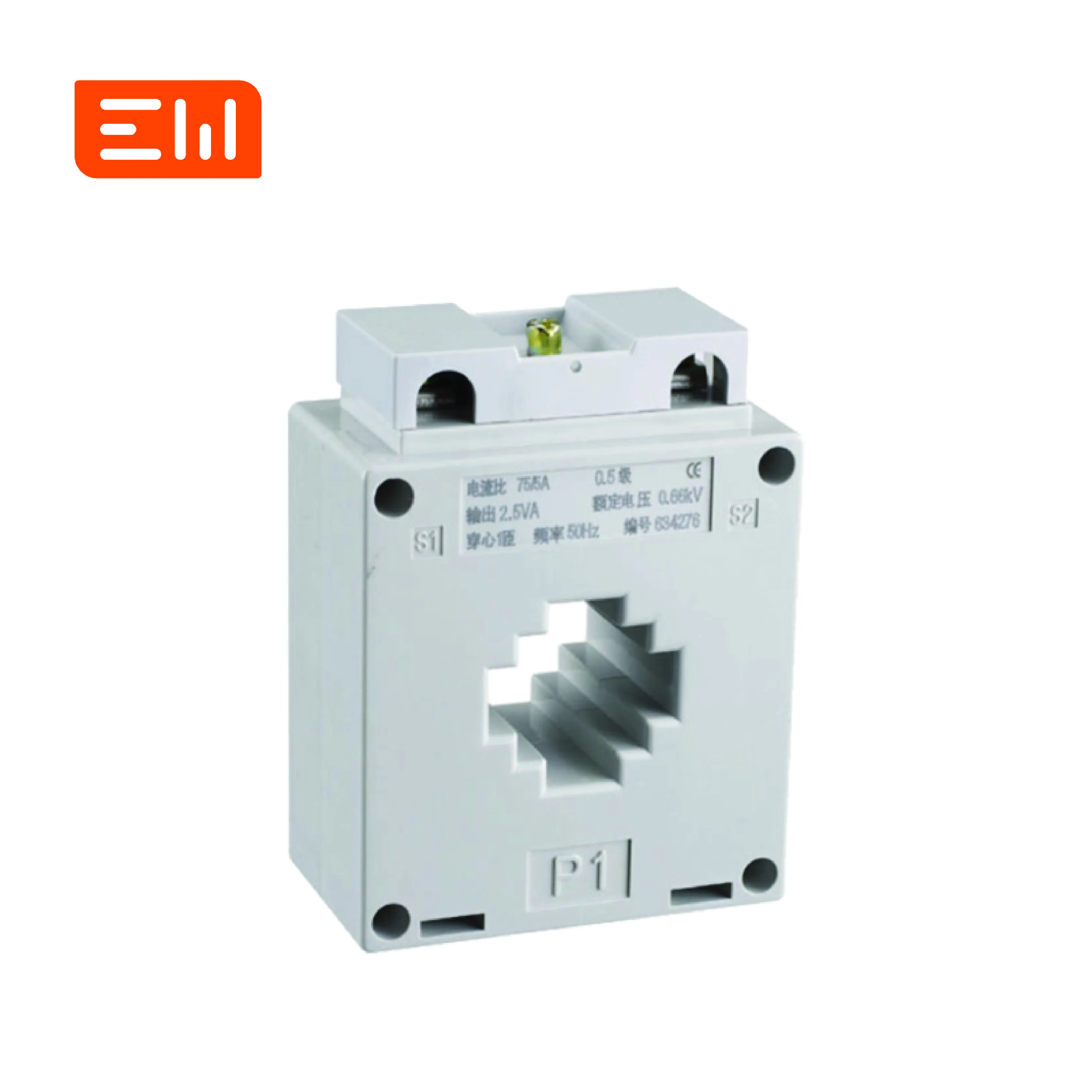Choosing the Right Current Transformer for Your Needs
Picking the right Current Transformer (often called a CT) is super important for making sure your electrical system works correctly and safely. Think of electrical systems like the plumbing in your house, but for electricity. A CT is a special tool used mainly to measure electricity, specifically the flow called alternating current (AC). Sometimes, the flow of electricity is too strong to measure directly. This device helps by shrinking this strong flow down to a smaller, safer level that we can easily measure. It's a bit like using a measuring cup to figure out how much water is flowing from a giant hose. Since there are many kinds of CTs, choosing one can seem tricky. This guide will help you understand what to look for, the different types available, and how to install and care for them.
What is a Current Transformer?
Before choosing one, let's understand what a current transformer does. It's a type of electrical device, similar in idea to a regular power AC transformer you might see on a power pole, but built for measuring. Its main job is to take a large electrical current in one wire (the primary side) and change it into a much smaller, matching current in another wire (the secondary side). This smaller current is safe for measuring tools and safety devices to handle. Without a good CT, it would be very hard and dangerous to check or control systems with lots of electrical power.
Different Kinds of Current Transformers
These devices come in a few main shapes and sizes, each good for different jobs:
-
Wound CTs: These have wires wrapped around inside for both the main (primary) and the measuring (secondary) circuits. The main wire is connected directly into the electrical line you want to measure.
-
Toroidal (or Window) CTs: These look like a donut. They don't have their own primary wire wrap. Instead, the main electrical wire you want to measure just passes straight through the hole in the middle.
-
Bar-type CTs: These have a solid metal bar built-in that acts as the primary wire connection. You bolt the main electrical lines directly to this bar. They are tough and good for very high electrical flows.
-
Split-core CTs: These are designed like a clamp or hinge. You can open them up and snap them around an existing wire without having to turn off the power or disconnect anything. This makes them great for adding measurements to systems that are already running. This type is sometimes called a CT transformer.
Knowing these types helps you pick the best current transformer for your situation.

What to Think About When Choosing a Current Transformer
To pick the best unit, you need to check a few important things:
Current Strength (Rating) and Ratio
How much electrical current will flow through the main wire? The CT needs to be rated to handle at least that much current, maybe a little more just to be safe. The "ratio" tells you how much the current gets shrunk down. For example, a 100:5 ratio means that for every 100 amps flowing in the main wire, 5 amps will flow out of the secondary wire to your measuring tool. You need to choose the right ratio for your measuring tools.
Accuracy Level
How exact does your measurement need to be? Current transformers have accuracy ratings, like grades (e.g., 0.5, 1). A lower number usually means better accuracy. If you're measuring electricity for billing (like the power company does), you need a very accurate unit. For safety systems that just need to know if something is wrong, a slightly less accurate one might be okay.
Burden (The Load)
"Burden" sounds complicated, but it just means how much work the CT has to do to power the measuring tools connected to its secondary wire, plus the wire itself. Think of it like how much weight a small engine can pull. You need to make sure the current transformer is strong enough (has a high enough burden rating) to handle the tools connected to it without losing accuracy. Add up the needs of all the connected devices and the wire length.
Where Will It Be Used? (Environment)
Will the CT be inside or outside? Will it get hot, cold, wet, or dusty? You need to pick a current transformer built to survive in the place you plan to install it. Some are tougher than others.
How Will It Be Installed?
Think about the size and shape of the unit and where it needs to fit. Is there enough space? Is it easy to connect the wires? If you can't easily disconnect the main wire, a split-core current transformer might be the best choice.

Installing and Connecting Current Transformers
Putting in a CT correctly is key for safety and getting good measurements.
Current Transformer Connection (Wiring it Right)
CTs have direction markers (usually P1/P2 for the main side and S1/S2 for the measuring side). It's very important to follow these markers when doing the current transformer connection. Getting them backward will mess up your measurements and could make safety devices work wrong. Also, for safety, one of the secondary wires (usually S2) should be connected to the ground (earth).
Using a Current Transformer Cabinet
If the CT is going into a tough spot (like outside or in a factory), putting it inside a protective box called a current transformer cabinet is a good idea. This box shields the device from dirt, water, and bumps, helping it last longer and work reliably.
Safety First! (Very Important Warning)
Working with electricity can be dangerous. **Never, ever leave the secondary (measuring) wires of a current transformer disconnected while the main power is flowing through the primary side.** If the secondary wires aren't connected to anything (or shorted together safely), a very high, dangerous voltage can build up. Always make sure the secondary wires are connected to your measuring tools or safely shorted together *before* the main power is turned on. Always follow safety rules and turn off power when installing or working on a CT.
Taking Care of Current Transformers (Maintenance)
Checking your CTs now and then helps make sure they keep working right.
Look Things Over
Check the current transformer for cracks, signs of getting too hot (like melted plastic or dark spots), loose wires, or lots of dirt. Keep the area around it clean.
Testing
Sometimes, special tests are needed to make sure the CT is still accurate and working correctly. This usually requires special tools and knowledge. Tests can check the ratio, the wiring connections (polarity), and the health of the internal parts.
Calibration (Fine-Tuning)
For really important measurements (like for billing), current transformers might need to be professionally checked and adjusted (calibrated) every few years to make sure they stay super accurate.
Conclusion: Picking the Best Current Transformer
Choosing the right current transformer means thinking about what you need to measure, how accurate it needs to be, and where it will be used. By considering the current strength (rating), ratio, accuracy, burden, environment, and how it will be installed, you can pick a unit that works well and safely. Remember that correct installation (especially the current transformer connection and safety rules) and occasional checks are just as important. These components, sometimes used with larger AC transformer systems, are key parts for keeping track of and protecting electrical systems. Taking the time to choose and install the right current transformer will help your electrical system run smoothly for a long time.
Completing Your Power System: Understanding Transformers
Switchgear plays a vital role in controlling and protecting electrical circuits, but it often works hand-in-hand with transformers to manage voltage levels effectively. Whether you're designing a substation or managing an industrial power setup, understanding how to select the right transformer is just as crucial as choosing the correct switchgear. Our comprehensive guide covers everything you need to know about electric transformers.
Learn More: How to Choose the Right Electric Transformer
Table of Contents
- Choosing the Right Current Transformer for Your Needs
- What is a Current Transformer?
- What to Think About When Choosing a Current Transformer
- Installing and Connecting Current Transformers
- Taking Care of Current Transformers (Maintenance)
- Conclusion: Picking the Best Current Transformer
- Completing Your Power System: Understanding Transformers

